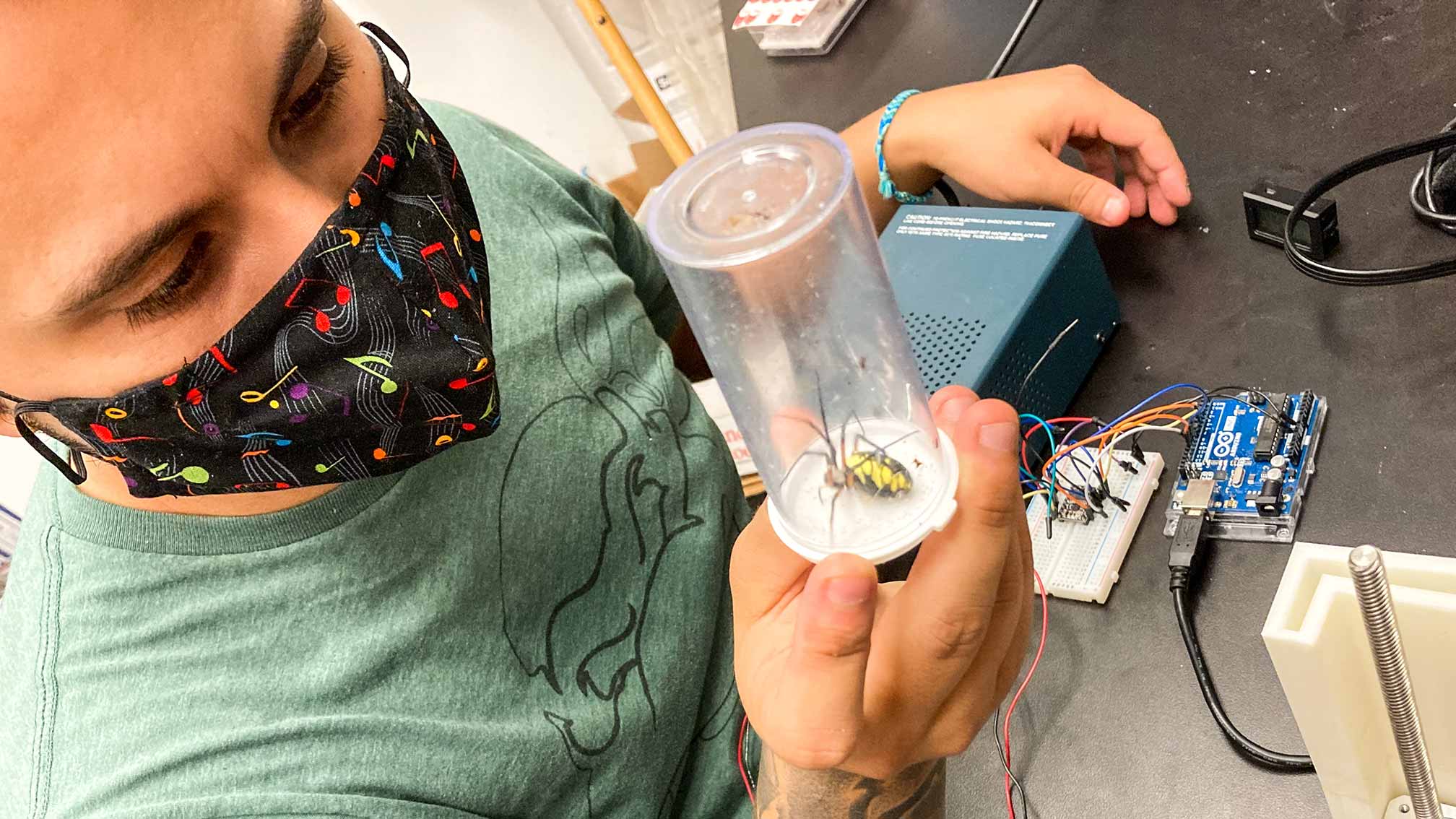Vassar Professors Win NSF Grant to Unravel Spider Web Mysteries
Vassar Professors Win NSF Grant to Unravel Spider Web Mysteries
Two Vassar faculty members have secured a grant from the National Science Foundation for a study of several species of spiders that use a unique kind of glue in their webs to catch moths that are able to escape the webs of most other spiders.

The $500,000 award will fund the three-year project undertaken by Adjunct Assistant Professor of Biology Candido Diaz ’11, Professor of Biology John Long, and scientists at the American Museum of Natural History. Several Vassar students and high school students in Poughkeepsie and New York City will also take part in the study.
Spiders catch their prey by placing a unique kind of glue on their webs so their victims can’t escape. In what Long calls an “evolutionary arms race” between spiders and moths, moths are able to free themselves from most spider webs by emitting a powder that adheres to the glue, allowing them to fly away. However, several rare species of spiders have been able to produce a special glue that hardens quickly, defeating the moths’ defense mechanism. Diaz conducted his original research on these spiders when he was a doctoral candidate at the University of Akron, collecting spiders from many parts of the world.
During their three-year study, researchers from Vassar and the American Museum of Natural History will measure the properties of the glues these spiders produce and correlate that information with the genes that express these types of glues, Long explained. “We hope to develop a model to explain the unique properties of this glue,” he said.
Long credited Diaz with developing the connections within the scientific community that led to the awarding of the NSF grant. “The reason Candido is the star of this project is that he has the ability to foster international collaboration,” he said. “He and his network of collaborators have been catching spiders all over the world—Japan, Africa, New Zealand and the United States.”
Diaz and Long are working with Dr. Cheryl Hayashi, Director of Comparative Biology Research at the American Museum of Natural History. Hayashi and Dr. Richard Aker, a post-doctoral researcher at the Museum of Natural History, will take part in the study.
Diaz, who was a physics major at Vassar, first began his research on spiders when his doctoral adviser at the University of Akron, Todd Blackledge, asked him to use his physics background to analyze the tension of webs. “That’s when I found a glue some spiders produced that was stronger than the glue of other spiders,” Diaz explained. “These spiders are moth specialists.”
Diaz said his fascination with spiders stemmed from his fandom for the Marvel Comics superhero Spiderman when he was a child. “I always loved Spiderman, so I wasn’t afraid of spiders,” he said. “I get that they’re weird and freak some people out, but I’ve always been fascinated by their webs.”
Long said Vassar students and high school students will join the research project this fall, feeding and caring for the web-weaving spiders and conducting experiments on the adhesion of their webs and their ability to spread the unique, moth-catching glue.
“Vassar students, as Spider Fellows, will engage in a two-year apprenticeship-mentorship role,” he said. “As apprentices, they will learn the research techniques that will allow them to participate in research that is on-going. As mentors, in their second year on the team, they will supervise first-year apprentices, work on presenting and writing up team research, and, we hope, create their own independent research projects.”
High school students are taking part in two ways. At Vassar, they are participating in the Vassar Science Scholars Program established and run by Professor of and Chair of Mathematics and Statistics Charles Steinhorn. Diaz and Long will be creating a laboratory exercise on spider biomechanics for that program, which they will teach annually. At the American Museum of Natural History, three New York City high school students will participate in research on the genomics portion of the research each year.